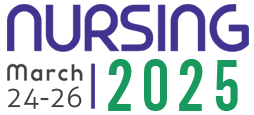Title: Nursing model for patients with dysphagia in parkinson's disease
Abstract:
Background: Parkinson's disease (PD) is the second most common neurodegenerative disease in the world. It mainly causes degeneration of the basal ganglia, causing motor symptoms and other non-motor symptoms (such as dysphagia). Dysphagia refers to a manifestation of swallowing dysfunction. Involves the oral, pharyngeal, or esophageal stages of swallowing and occurs at every stage of the disease. It is often undetected in the early stages and often becomes apparent in the later stages. The problem can cause weight loss, dehydration, malnutrition, and social interaction. Restriction, thereby affecting the quality of life, and in severe cases, death due to aspiration pneumonia caused by dysphagia. Therefore, dysphagia care in PD is important. Parkinson's disease dysphagia care is not currently included in neurology wards.
Objective: Establish a complete dysphagia care model for Parkinson's disease to improve the quality of care.
Intervention: In the 2W1H care model, why refers to the chief complaint of signs and symptoms of dysphagia or signs and symptoms of aspiration pneumonia when a Parkinson's patient is hospitalized; what refers to the assessment using an assessment tool, such as signs and symptoms of dysphagia or signs and symptoms of aspiration. pneumonia signs and symptoms checklist, EAT-10 assessment tool, and three-stage swallowing assessment tool; How refers to providing first-line and second- line care measures to patients based on the assessment results.
Results: After applying the 2W1H care model to the neurology ward, interviews with inpatients, family
members, ward nurses, and nurses revealed that for patients, “Being able to know prevention methods early is an important thing for me in managing symptoms. "For family members, "I think it would be good if they could know the changes in the disease in their family members, and if they are discovered in a timely manner, they can know the follow-up treatment and seek resources to solve the problem." The ward nurse and nurse believe that "the 2W1H care model is a worthy model to operate, but it is recommended that the implementation of this model requires cross- team cooperation. If it can be led by the Parkinson's disease and action center, the original resources can be used to Integrate to achieve follow-up care tracking."
Conclusions: The 2W1H care model further proves that if nursing care can incorporate this care process into daily care routines, it will not only detect the problem of swallowing disorders, but also allow patients and their families to recognize and prevent this problem early for early prevention and treatment. care concept.


